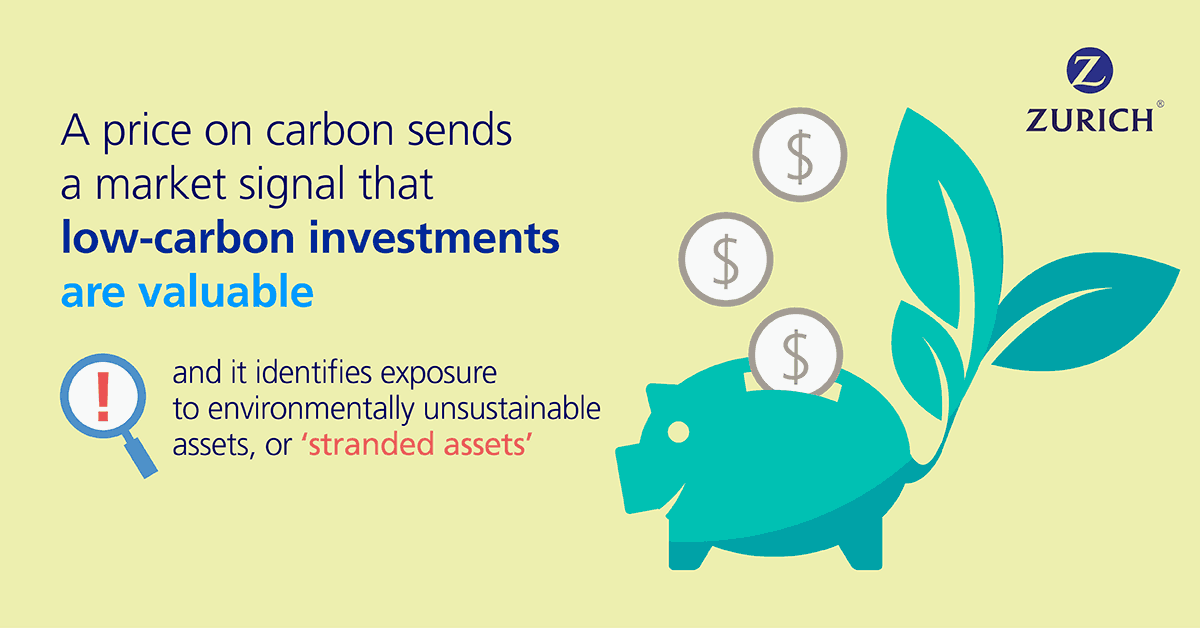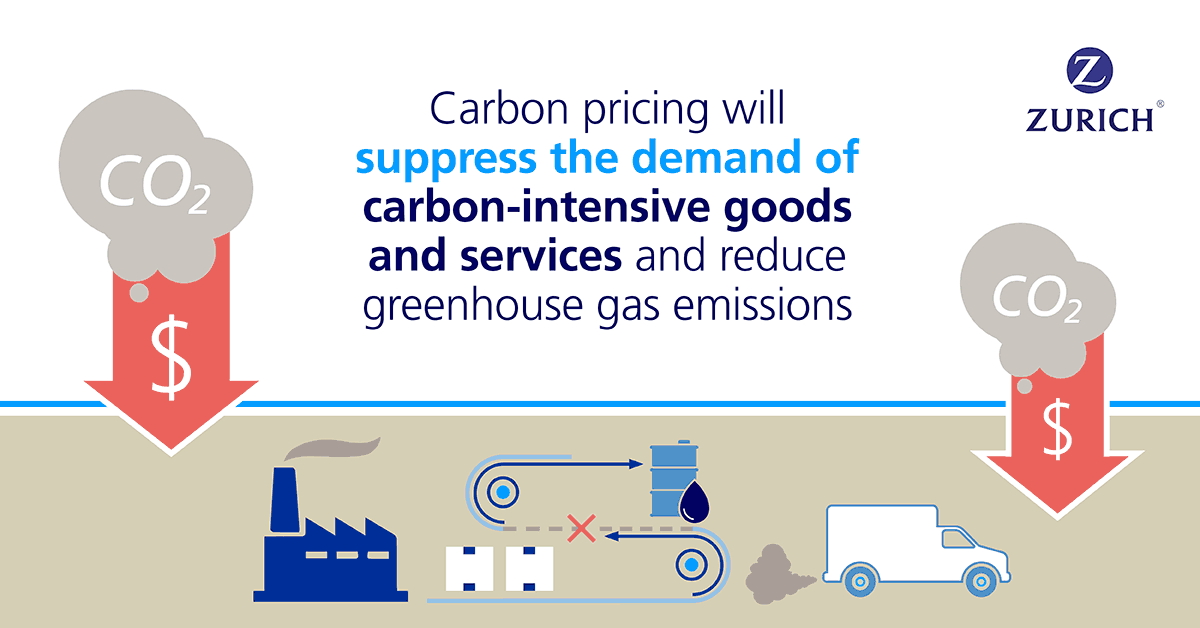Why carbon pricing will help to reduce emissions
Climate resilienceArticleMay 26, 2021
Carbon pricing is seen as an economic solution to an existential threat. But it goes a long way beyond the realm of economics.
Carbon pricing is all about effective economics: you pollute, you pay.
Economists view the social and business costs related to greenhouse gas emissions, such as flood damage or health care costs arising from heat waves, as a sign of market failure. These externalities, to use an economics term, are not typically priced into the value of products, services, or financial assets.
To correct this market failure, a growing number of economists, businesses like Zurich, governments, NGOs and international bodies like the IMF and OECD, are advocating for a global price of carbon.
This will increase the price and thereby suppress the demand of carbon-intensive goods and services, which will lead to a reduction in emissions.

In addition, a price on carbon sends a financial signal to investors that low-carbon investments are valuable today and will be even more valuable in the future. It would also help identify exposure to environmentally unsustainable assets, or ‘stranded assets’, that may have to be prematurely written-down, devalued or converted to liabilities.
This would all help to stimulate investment into clean technology and innovation and, importantly, provide the confidence to fund large infrastructure projects required for a transition to a low-carbon economy.
It all sounds simple, but it’s not. And carbon pricing is not a challenge that economists can solve alone, there are significant political, societal and behavioral hurdles to overcome.
It’s always geopolitical
“It makes sense to recognize the price of carbon, otherwise we are not going to change our behavior,” says John Scott, Head of Sustainability Risk for Zurich and a member of the World Economic Forum’s Global Future Council on Frontier Risks. “Most people are still going to take low-cost flights and buy cheap green beans flown in from Kenya, unless the emissions generated by the flight or the supply chain are built into the price.”
A price on carbon would help shift the burden for the costs associated with climate change back to those who are responsible for it, and who can reduce it. But Scott warns it could cause geopolitical tensions.
“The EU, for example, has proposed a carbon tax, the Carbon Border Adjustment Mechanism (CBAM) on imported products from outside of the EU. The tax would target imports of carbon-intensive products such as iron and steel, cement and fertilizers affecting countries that don’t match the EU’s internal carbon pricing systems. Countries like Russia – Europe’s biggest supplier of carbon-intensive goods – may consider these punitive and protectionist tariffs and respond with its own retaliatory tariffs,” explains Scott.
The answer, he says, is to implement Article 6 of the Paris Agreement. It covers the rules on how countries can reduce their emissions using international carbon markets, but it was never agreed in the French capital and needs to be a priority for November’s COP26 meeting in Glasgow.

Article 6 will allow countries that have overachieved their emissions-reduction targets (known as ‘nationally determined contributions’, or NDCs) to sell this credit to countries that have fallen short. And crucially, to do this requires an internationally agreed mechanism and rulebook to trade carbon.
“Implementing Article 6, if we get it right, will have a dramatic impact on how we live our lives,” says Scott. “Until you get global transparency on carbon price and recognize the value of carbon in everything we buy as consumers and as companies, then we cannot make the rational economic decisions that will drive the right behaviors.
“At the same time wealthy countries must make good on promise made in earlier rounds of COP negotiations to mobilize millions of dollars in climate finance for poorer nations, so that they can invest in technologies that transition their economies to zero carbon.”
Carbon pricing – a tax on the poor?
Carbon pricing, alone, may not produce the necessary changes in behavior. It needs to be supported by other policies, including phasing out fossil fuel subsidies, measures to encourage research into critical green technologies, and policies that influence both industry and consumer demand for low carbon products, such as building regulations.
In addition, carbon pricing needs to overcome the perception that the burden of carbon taxes falls heaviest on people with the lowest incomes.
It was this that led to the rise of the ‘gilets jaunes’ (yellow vest) movement in France in late 2018. Its protests were initially motivated by rising fuel prices that it claimed had a disproportionate impact on the working classes.
Despite these concerns, Angel Serna, Senior Vice President of Public Affairs at Zurich, believes carbon pricing must be the cornerstone of a suite of government actions to tackle climate change.
“Don’t kill carbon pricing just because it is not an instrument specifically designed for creating social equality,” stresses Serna. “Those on the highest incomes are likely to pay more, but ultimately it is a tool specifically designed to tackle climate change. If you want to redistribute income you have to use other policy measures as well.”
Serna believes you can increase the effectiveness and reduce opposition to carbon taxes by returning the revenues to consumers through a per-capita refunding mechanism that favors the economically disadvantaged.
In Switzerland, for example, two-thirds of its carbon tax revenues are reimbursed to consumers via a health insurance rebate. But Serna says other refunding mechanisms, such as discounts on internet access or tax credits for low income families, could be equally effective.

Despite these refunding mechanisms, carbon pricing could still face tough opposition from populist governments and carbon-intensive industries with strong political influence.
In these cases, Serna says policies may need to go a step further to make carbon pricing politically palatable. This could include some form of income redistribution and exemptions or extended timelines for carbon-intensive industries.
Despite the challenges, Serna remains adamant that carbon pricing is a crucial tool to effectively change behavior.
“Climate change is a consequence of our actions,” he says. “To encourage people to act in a different way, we need to provide an incentive. Pricing remains our most effective incentivizing mechanism, which means carbon pricing is our best weapon to combat climate change.”




